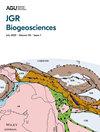Temperature and Flow Control Organic Carbon Metabolism in Boreal Headwater Streams
Abstract
Metabolism in stream ecosystems alters the fate of organic carbon (OC) received from surrounding landscapes, but our understanding of in-stream metabolic processes in boreal ecosystems remains limited. Determining the factors that regulate OC metabolism will help predict how the C balance of boreal streams may respond to future environmental change. In this study, we addressed the question: what controls OC metabolism in boreal headwater streams draining catchments with discontinuous permafrost? We hypothesized that metabolism is collectively regulated by OC reactivity, phosphorus availability, and temperature, with discharge modulating each of these conditions. We tested these hypotheses using a combination of laboratory experiments and whole-stream ecosystem metabolism measurements throughout the Caribou-Poker Creeks Research Watershed (CPCRW) in Interior Alaska, USA. In the laboratory experiments, respiration and dissolved OC (DOC) removal were both co-limited by the supply of reactive C and phosphorus, but temperature and residence time acted as stronger controls of DOC removal. Ecosystem respiration (ER) was largely predicted by discharge and site, with some variance explained by gross primary production (GPP) and temperature. Both ER and GPP varied inversely with watershed permafrost extent, with an inverse relationship between temperature and permafrost extent providing one plausible explanation. Our results provide some of the first evidence of a functional response to permafrost thaw in stream ecosystems and suggest the role of metabolism in landscape C cycling may increase as climate change progresses.

 求助内容:
求助内容: 应助结果提醒方式:
应助结果提醒方式:


